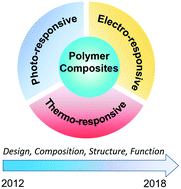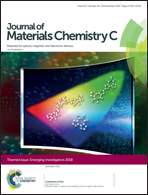Function-driven design of stimuli-responsive polymer composites: recent progress and challenges
Abstract
Stimuli-responsive polymer composites have been extensively investigated due to their diverse structures and functional properties in response to various environmental stimuli. The past few years have witnessed a rapid expansion of design and fabrication of such composites at both the material and system levels, which opens tremendous opportunities not only for fundamental understanding of their structure–property relationships but also for exploring their applications in emerging areas such as electronics, biomedical devices, soft robotics and electromechanical engineering. A systematic understanding of the progress in the constituent materials, properties and applications of these composites is needed to guide future development. Here, we review the most recent progress (post the year 2012) in the material and structure designs of stimuli-responsive polymer composites to understand the state-of-the-art development, with a focus on photo-, electrical- and thermo-responsive composites. The advantages and disadvantages (or limitations) of different types of polymer composites are evaluated according to response-related parameters such as response time and sensitivity to stimuli. In the end, this review is concluded with challenges and perspectives for future design of better polymer composites.

- This article is part of the themed collections: Recent Review Articles and Journal of Materials Chemistry C Emerging Investigators


 Please wait while we load your content...
Please wait while we load your content...